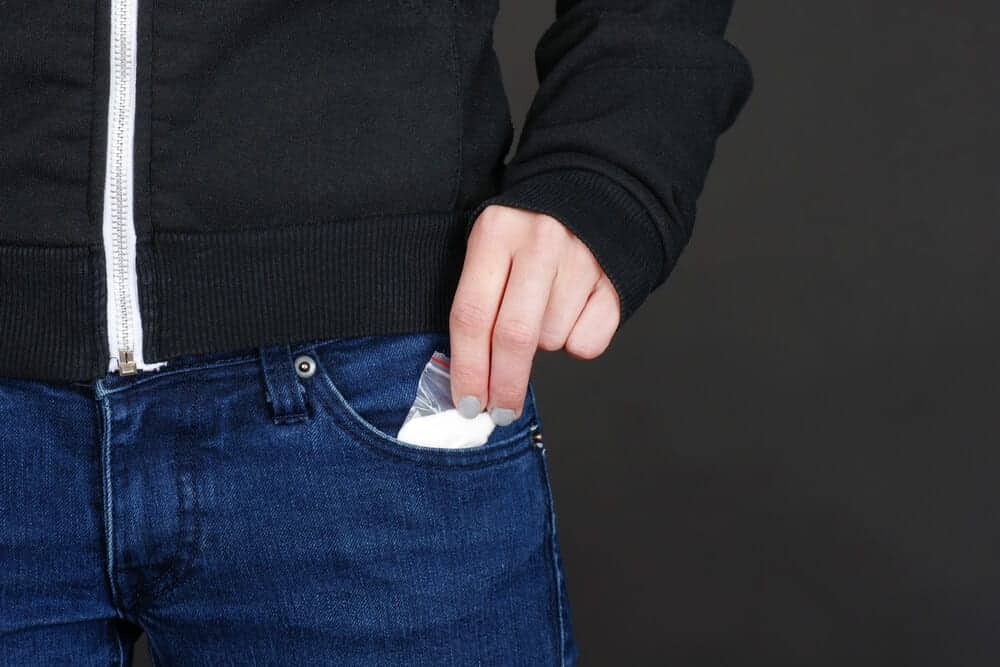
The signs of meth use are unique. While many other illicit drugs have similar symptoms, the use of meth creates far more visible damage. Meth is one of the most insidious, addictive substances that teens can be drawn to.
Meth, or Methamphetamine, is a central nervous system stimulant made from amphetamine and additional chemicals. It was widely used as a decongestant and weight loss aid legally, but it was very easy to become addicted to because it creates a rush of dopamine (a feel good neurotransmitter) to the brain that gives the user better focus, motivation to work, improved learning, and better memory retention. It also creates an euphoric dopamine rush that can last from 30 minutes to hours at a time.
The use of meth can create addiction or dependence in as little as one use.
One use.
Teens who use it over the course of a few days can quickly develop a tolerance for meth, leading them to take more and more to achieve the results they want. The signs of meth use are not immediately evident, but there are physical, emotional, and behavioral signs of meth use that parents should watch for.
Physical Signs of Meth Use
When we, as friends, family, and neighbors, notice that something’s not right with someone we know, it is not wrong to want to make sure that person is okay. Drug addicts are known to always say that “Everything is fine, I don’t need anything. Stop worrying.” But if you notice any of the following signs of meth use, do what you can to help that person.
Though addiction to any illegal drug will produce signs and symptoms, meth is particularly destructive to the physical appearance. Physical signs of meth use include the following:
- Twitching, facial tics, jerky movements, tremors
- Dilated pupils
- Noticeable and sudden weight loss
- Skin sores or track marks
- Rapid eye movement
- Inability to sit still
- Burns, particularly on the lips or fingers
- Rotting teeth
- Extreme weight loss
In addition to releasing huge amounts of dopamine, meth also raises blood pressure, respiration, heart rate, and body temperature. These effects will negatively impact the cardiovascular system and nervous system, which can create twitching and tremors, dilated pupils, and rapid eye movement.
The meth “cook” extracts elements from the ingredients to boost their strength. Meth producers then mix the substance with chemicals like drain cleaner, battery acid, lantern fuel, or antifreeze. These highly corrosive substances are responsible for the damage to teeth, skin sores, and burns.
Extreme weight loss is caused when a meth addict “goes on a bender”, doing nothing but using meth for days or weeks at a time. Their brains are so riddled with a craving for more and more meth that they don’t take care of their basic biological needs – food, water, sleep, bathing, etc.
These warning signs are not all specific to meth use alone. The cardiovascular and nervous system symptoms can be found in addicts who use cocaine, heroin, and other illegal substances. But the physical damage to the appearance (rotting teeth, skin sores, burns on the fingers) are unique to meth due to the corrosive chemicals used to produce it.
Emotional Signs of Meth Use
The signs of meth use are not limited to the physical. Because meth creates changes in the brain, it is not uncommon for meth users to show emotional signs of their addiction. Emotional signs and symptoms are also present and can include the following:
- Paranoia
- Violent mood swings
- Panic
- Anxiety and restlessness
- Aggression
- Severe depression following a methamphetamine binge
- Euphoria
- Racing thoughts
- Delusions of power
Many of these signs and symptoms can also be attributed to depression, sociopathy, bipolar disorder, and borderline personality disorder. Regardless of whether or not the symptoms are signs of meth use, these signs are still evidence that something is wrong.
One of the first things you can do to help is to just offer to listen to the person. An addict often doesn’t want to remain an addict but doesn’t see a way out. By being that empathetic ear, you can give them a chance to talk about their addiction and offer to be there for them. You can even offer them a ride to the hospital and stay with them while they are being evaluated.
However, when we are dealing with obvious signs of meth use, the person is in real, immediate physical danger because of the insidious nature of the drug. The chemicals that make up meth are already damaging the heart, brain, liver, and lungs of the addict. Don’t let fear or social convention stop you from reaching out to help.
Behavioral Signs of Meth Use
Behavioral signs are not unique to meth addiction. Once again, they can be signs of other mental health disorders. One of the easiest ways to tell the difference between mental health disorders and signs of meth use is the sudden onset of the changes in behavior. Most addicts generally present behavioral symptoms, and signs of meth use can also be behavioral in nature:
- Risky sexual behavior or increased sexual activity
- Wanting to quit or cut down on methamphetamine use without being able to
- Increase in fighting or violent behavior
- Quitting activities that they once loved
- Trouble with the law
- Borrowing or stealing money
- Preoccupation with “chasing the next high”
- Self-isolating
- Engaging in other risky behaviors or thrill seeking
Sometimes addicts will openly admit their problem and talk about not being able to stop. This is an opportunity for you to help that person. Offer to take them to a doctor or help them locate a local treatment center. Don’t ignore them! If they are reaching out to you for help, give it to them.
Meth addicts also have a penchant for stealing money, borrowing money, pawning valuable items, shoplifting – anything they can do to pay for their habit. This often leads to trouble with the law, jail time, or other consequences that they are incapable of foreseeing. They are only focused on their next high.
Psychological Signs of Meth Use
Unless you have experience with mental health issues, you may not recognize the psychological signs of meth use. These types of signs and symptoms are more often recognized by a mental health professional, like a therapist, counselor, psychologist, or psychiatrist. If you know someone exhibiting these types of symptoms, regardless of the substance use, get them medical attention immediately:
- Obvious confusion
- Memory loss
- Hallucinations
- Disorganized lifestyle
- Violence
- Paranoia, which can be permanent
- Psychosis
- Total break from reality
People or addicts showing these types of psychological signs could be at risk for a psychotic episode where they could hurt themselves or others. If you notice these signs of meth use, don’t try to help the person yourself as he or she could be unpredictable. Instead, call for help.
Damages Done
If a teenaged parent is addicted to meth, he or she may start to ignore his or her responsibilities as a parent:
- Child neglect
- Child abuse – both physical and sexual abuse
- Child endangerment, especially if cooking meth at home
Anyone showing the signs of meth use is in danger of the following:
- Depression
- Poor interpersonal relationships
- Unemployment
- Domestic violence
- Lung damage
- Liver damage, including cirrhosis
- Brain damage
- Kidney disease
- Psychosis
- Sexually transmitted diseases like HIV/AIDS
- Heart attack
- Stroke
- Seizures
- Death
Any one of these dangers can visit a meth user at any time. And while interpersonal issues are part of the signs of meth use, those are damages that can be repaired. A meth addict who does damage to the heart, liver, brain, lungs, and/or kidneys is doing permanent damage that cannot always be fixed.
For example, the use of meth is associated with lower numbers of neurons in the central nervous system (CNS). The CNS can only regenerate so many neurons, and usually, the loss of neurons cannot be recovered. Habitual use of meth can result in brain damage via neuronal death. Neuronal death occurs in a number of areas of the brain as a result of meth abuse:
- The hippocampus: a vital structure for memory and learning new information
- The striatum: a structure in the brain that is central to movement and directed attention
- The parietal cortex: a structure that is involved in spatial visualization and memory of nonverbal material
- The frontal and prefrontal cortex: areas of the brain that are crucial in cognition, reasoning, problem-solving, complex attention, and the inhibition of risky behaviors
- The cerebellum: controls aspects of movement and a number of cognitive functions
In terms of the cardiopulmonary system, meth users tend to show signs of cardiovascular disease at a higher intensity and at younger ages. Meth use can also lead to a kind of blood pressure that affects the heart and the vessels in the lungs, how it can lead to an arrhythmia, and how it can change the structure of the heart muscle.
So, for a meth addict, the dangers of addiction are not just about mental health or emotional health – the risk of death for meth use is extremely high. And even though other drugs like cocaine and heroin also share some of these risks, meth is far more dangerous.
Treatment Options

Because an addict is likely to have done physical damage to the body with meth use, it is essential that you take the addict to a medical facility immediately. They could be malnourished, have heart issues, need sedatives for hallucinations or paranoia, or be severely dehydrated. In these situations, medical intervention is the first step of treatment.
One the meth addict is stable, both short-term and long-term treatment options can be discussed.
Short-Term Treatment: Withdrawal and Detoxification
The symptoms of meth withdrawal vary. The severity of the side effects depends on a number of factors, including the length of time the person used, the amount of meth used, how often they used, and whether they also abused other substances. Even the method they employed to use the drug will affect withdrawal. Users who injected meth will usually have a longer, more intense withdrawal process than those using other methods of ingestion.
Signs and symptoms of withdrawal can include:
- Fatigue
- Increased appetite
- Insomnia
- Agitation
- Excessive sweating
- Fever
- Dehydration
- Paranoia
- Hallucinations
- Confusion
- Red, itchy eyes
- Loss of motivation
- Nausea
- Tremors
- Anxiety
- Suicidal thoughts
- Stomachache
- Severe depression
The time period for withdrawal varies, but the acute phase of withdrawal peaks around day two or three after last use. The physical withdrawal tends to ease after about a week. But, other symptoms like drug cravings, mood swings, agitation, and sleep disturbances can persist for weeks. The accompanying depression can last for months and even up to a year for some addicts.
Long-term Treatment
After the detox process is nearly finished, doctors will help patients make decisions about the next steps. Detox is only the first step in meth addiction treatment, and doctors will usually recommend that meth addicts continue their recovery in a rehab facility, where professional mental health experts can help with the emotional and mental recovery.
When detox is over and withdrawal symptoms have lessened, counseling will begin. Therapists help recovering meth users figure out why they started using drugs in the first place. They offer emotional support and teach patients how to cope with the temptation to use meth in times of stress. Therapists also help the addict examine thought and behavioral patterns that led to their use of drugs.
Counselors or therapists will use a variety of therapies and techniques for meth addict treatments, but most rely on cognitive behavioral therapy (CBT). Cognitive behavior therapy is particularly effective for treating methamphetamine addiction, as well as the inevitable depression and anxiety that come with meth addiction. Addicts are taught to face their fears and understand what led them to drugs. They are given new coping skills and ways to deal with stress in everyday life.
Conclusion
The signs of meth use are unique but can also include constellations of symptoms related to other addiction problems. However, the extreme weight loss, rotting teeth, and lack of basic proper hygiene are serious signs of meth use that indicate an addict is in danger of imminent need of hospitalization or even death. Parents and teens alike need to understand these signs of meth use to keep not only themselves safe, but also those around them.
Concerned that your teenager may be using meth? Have you recognized some startling signs while reading this article? Reach out to Beachside today in order to learn more about how our hard-working team can help your teenager recover from substance abuse!




